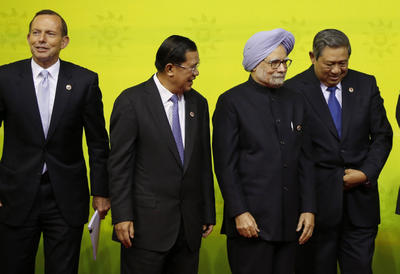ASEAN leaders must be bold enough to make substantial progress in their institutional set-up, from introducing qualified-majority systems, to increasing the delegation of power from national to regional agencies, and moving away from the principle of equal budget contribution.
Currently the ASEAN Secretariat runs with around 70 professional staff and a yearly budget of only US$16 million, against a disproportionate amount of tasks to be accomplished and meetings to be attended. The high-level task force will likely recommend a drastic increase in the quantity and quality of financial contributions and human resources working for the ASEAN Secretariat and other regional organs. While quantity and quality are both important, finding the money is, relatively speaking, the easier task — but forming high-quality human resources requires time, commitment and dedication. It is therefore time to think about the possibility of creating an ASEAN Academy — a new institution aimed at forming a regional civil service for ASEAN affairs.
The need for an ASEAN-dedicated civil service is compelling — a regional bureaucracy capable of planning, introducing and managing reforms, rules and regulations to be adopted in compliance with the Charter and the ASEAN Community Blueprints. Capacity-building programs on technical and regional matters are needed not only for personnel working in ASEAN institutions, but also (and mainly) for staff in national agencies involved in ASEAN affairs. Increasing awareness of how regional cooperation can strengthen the national interest would be an important aspect of such training.
An ASEAN Academy should be able to attract the best students from its member states and ultimately help reinforce ASEAN’s identity. Establishing an ASEAN Academy would be instrumental to understanding and delivering the group’s goals and principles. Maintaining peace and stability, enhancing regional resilience, promoting the rule of law, forming a region-wide democratic and harmonious political environment, alleviating poverty and narrowing development gaps, and creating a prosperous single market and production base would be the ultimate goals of establishing such an institution.
The courses and activities implemented by the Academy should be organised around the principles of non-interference in domestic affairs and respect for national independence, shared commitment and collective responsibility, reliance on the peaceful settlement of disputes and renunciation of the use of force, respect for fundamental freedoms and human rights, good governance, and the promotion of centrality in the regional architecture for cooperation. Eventually, an ASEAN Academy could be instrumental in helping to promulgate the association’s priorities and strategies, and facilitating their inclusion in the projects and programs of bilateral and multilateral agencies. The Committee of Permanent Representatives (CPR) and the Secretariat should be invited to provide general guidance and coordinate the Academy’s operations, helping to avoid duplications and matching activities with ASEAN’s development strategy.
The headquarters of the ASEAN Academy could be located in any member state ready to champion its cause, and willing to host the institution. National branches could be established in all ASEAN member states, attached to existing structures, such as local diplomatic academies. While the host country would be expected to lead the development of the Academy and contribute in larger part to its budget than other member states, resources could also be pooled from external agencies, under the guidance of the Secretariat and CPR.
Several countries may be interested in hosting the Academy’s main campus. Singapore is the best performer among Southeast Asian countries in education, with two of its universities among the world’s top 100. Malaysia has been running a Masters course in ‘ASEAN Studies’ and another in ‘Regional Integration’ since the year 2000 at the University of Malaya. Vietnam has one of the oldest universities in the world, the Temple of Literature in Hanoi (built in 1070), which hosted the imperial academy and served as the highest institution for training bureaucrats in the Vietnamese (and Chinese) traditional education system. Countries like the Philippines and Thailand, where schools such as the Asian Institute of Management or the Asian Institute of Technology are well regarded, may also be interested.
The high-level task force is mandated with an important and exciting task. Among other things, its members should consider the creation of an ASEAN Academy — a highly feasible, possibly non-controversial institution aimed at forming top-quality civil servants who are expert on regional affairs. ASEAN’s member states, as well as the wider Asian region and the world, will benefit from this initiative.
Giovanni Capannelli is Principal Economist and Special Adviser to the Dean, Asian Development Bank Institute, Tokyo. The views expressed in this article are uniquely of the author and do not necessarily reflect those of the Asian Development Bank Institute, the Asian Development Bank, or its Board of Directors.

